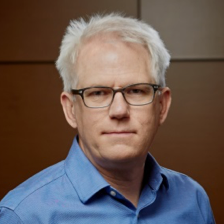Scott Painter
Oak Ridge National LaboratoryTuesday, September 10th at 1:00-2:00 PM PT / 4:00-5:00 PM ET

ABSTRACT
The southeastern United States is experiencing and will continue to experience increasing temperatures, more extreme heat events, and an intensifying hydrologic cycle with more frequent and severe storm and drought events. Moreover, the region is experiencing significant population growth and widespread transitions from rural to urban areas. Motivated by the need to better understand the consequences of those changes, the Watershed Dynamics and Evolution Science Focus Area (WaDE SFA) at ORNL is exploring watershed hydro-biogeochemical function under a range of hydrologic regimes in stream networks that drain heterogeneous land covers in the Tennessee River Basin, the most intensively used water resources region in the US. The project is using stream oxygen dynamics as a key integrated functional response to hydrology, land-cover/land-use change, and inputs of organic matter and nutrients. In partnership with the IDEAS-Watersheds project, the modeling crosscut team in the WaDE SFA is working toward multiscale models for stream metabolism and dissolved oxygen dynamics in mid-order stream networks. I will summarize the modeling strategy, progress in developing the enabling software components, and ongoing efforts to integrate those components in a high-resolution integrated hydrology model of the East Fork Poplar Creek watershed, a 4th-order mixed land use watershed near Oak Ridge, TN.
Presentation Slides (Coming soon!)
